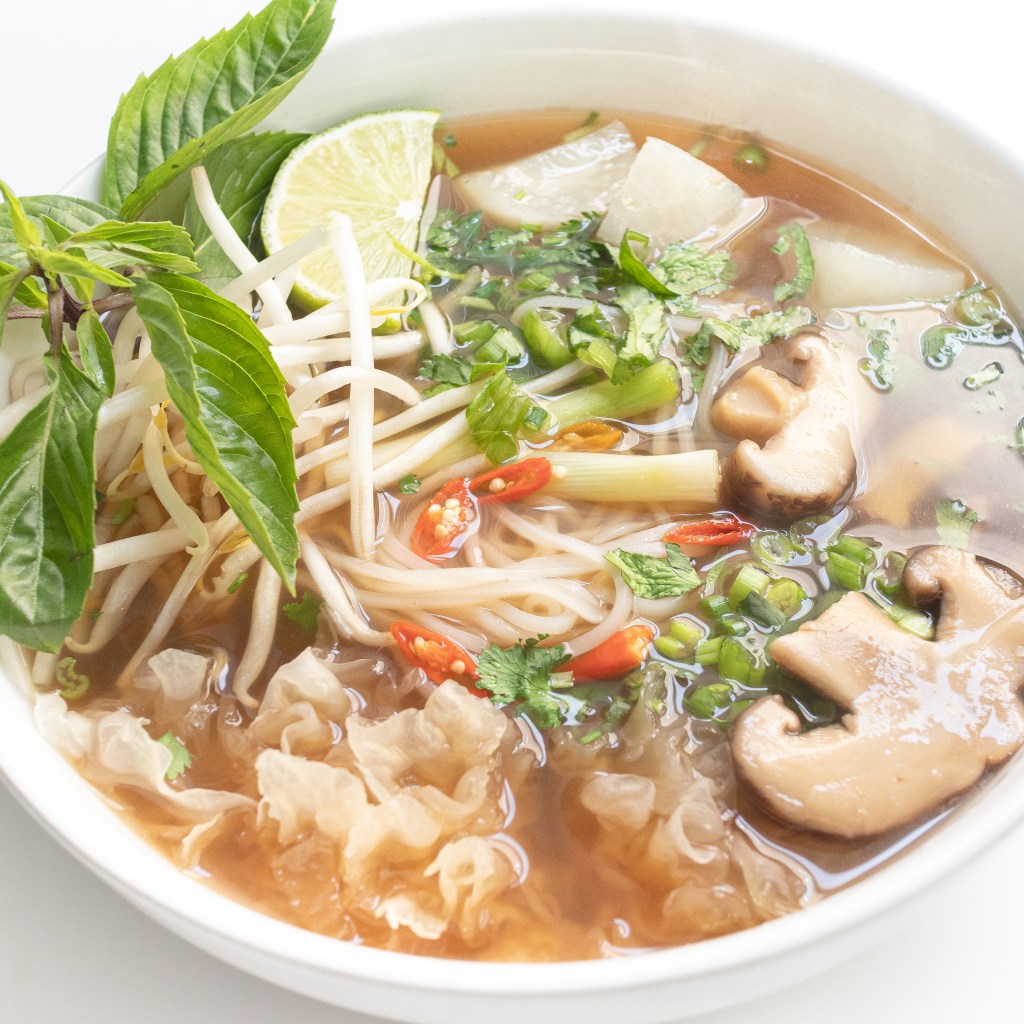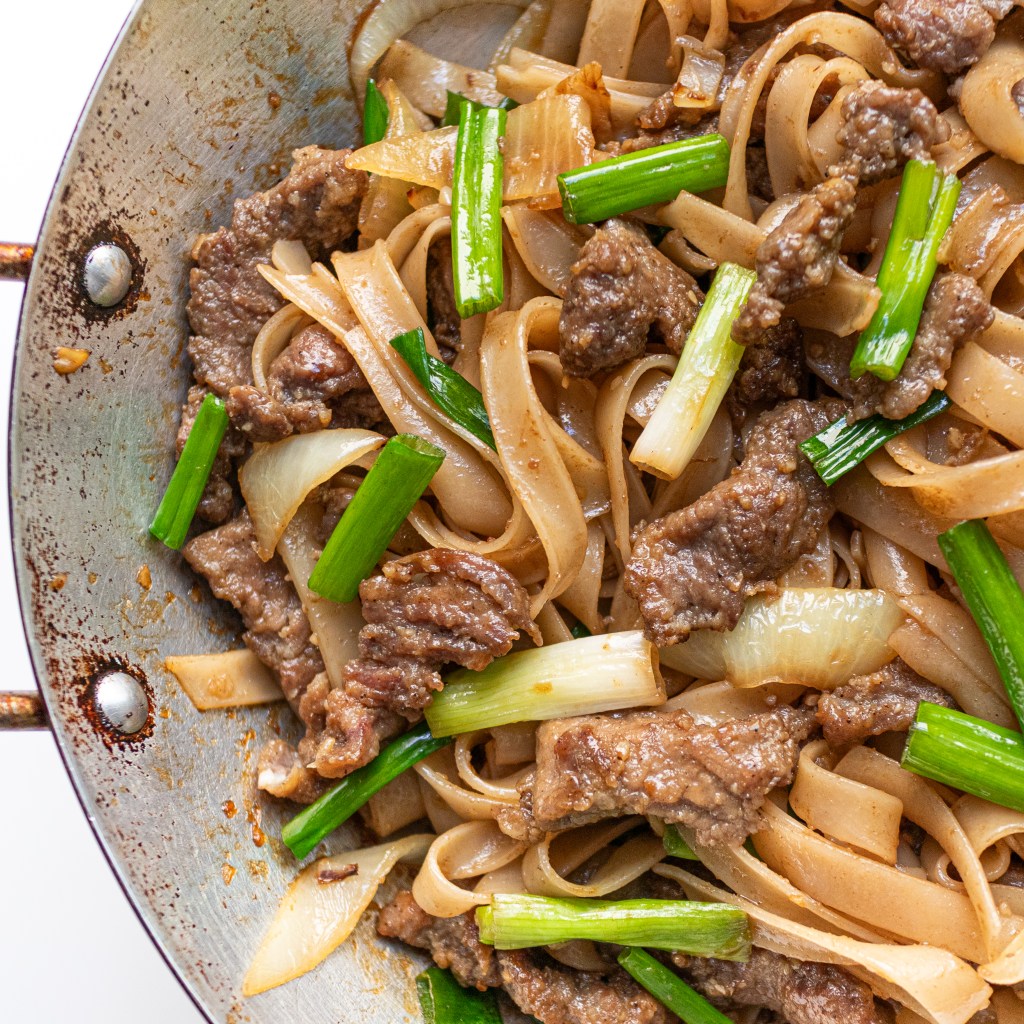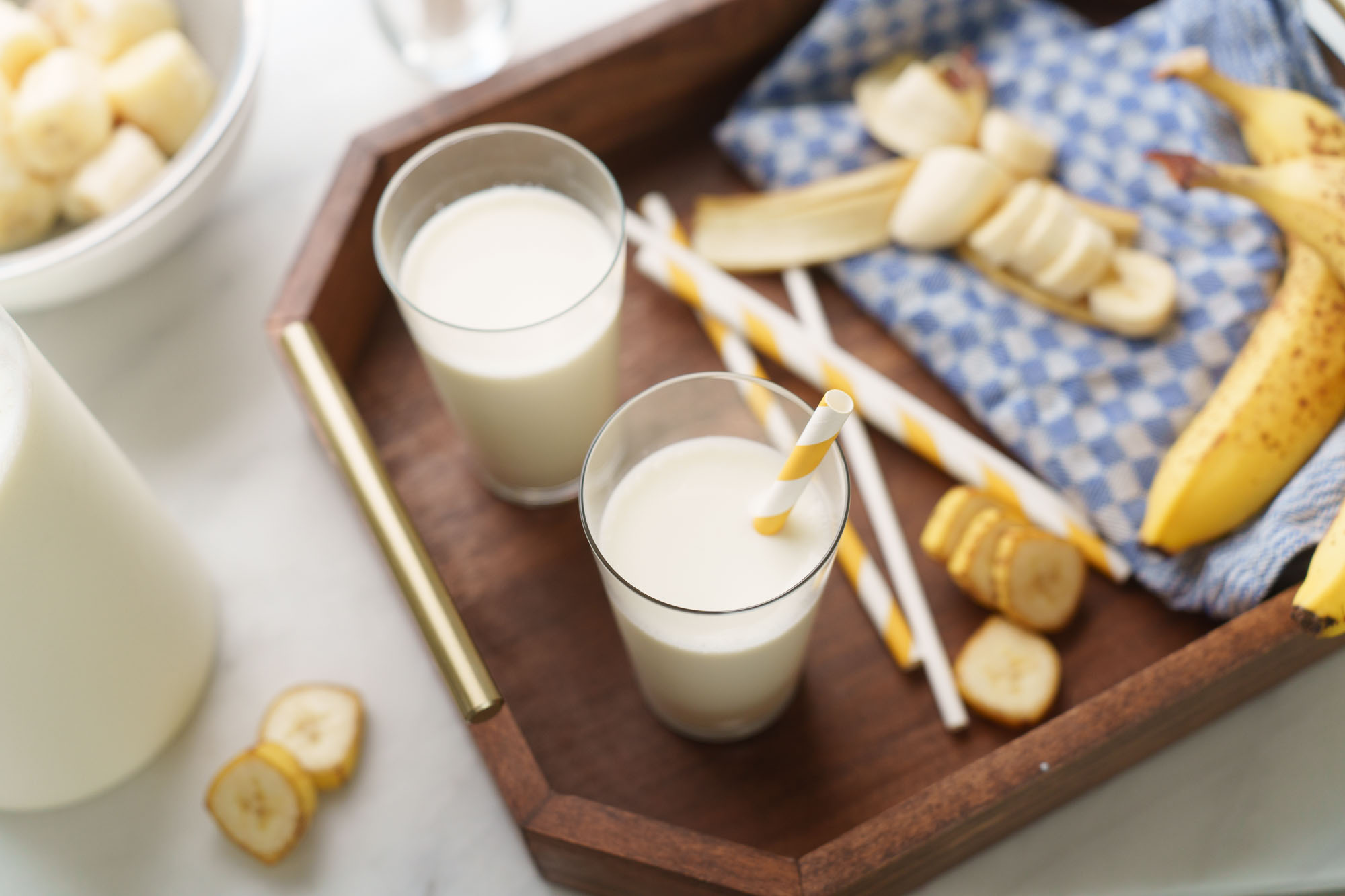If you’re in search of a light meal or a meat-free option, this authentic vegetarian/vegan pho, made with a homemade vegetable stock, is the perfect choice.
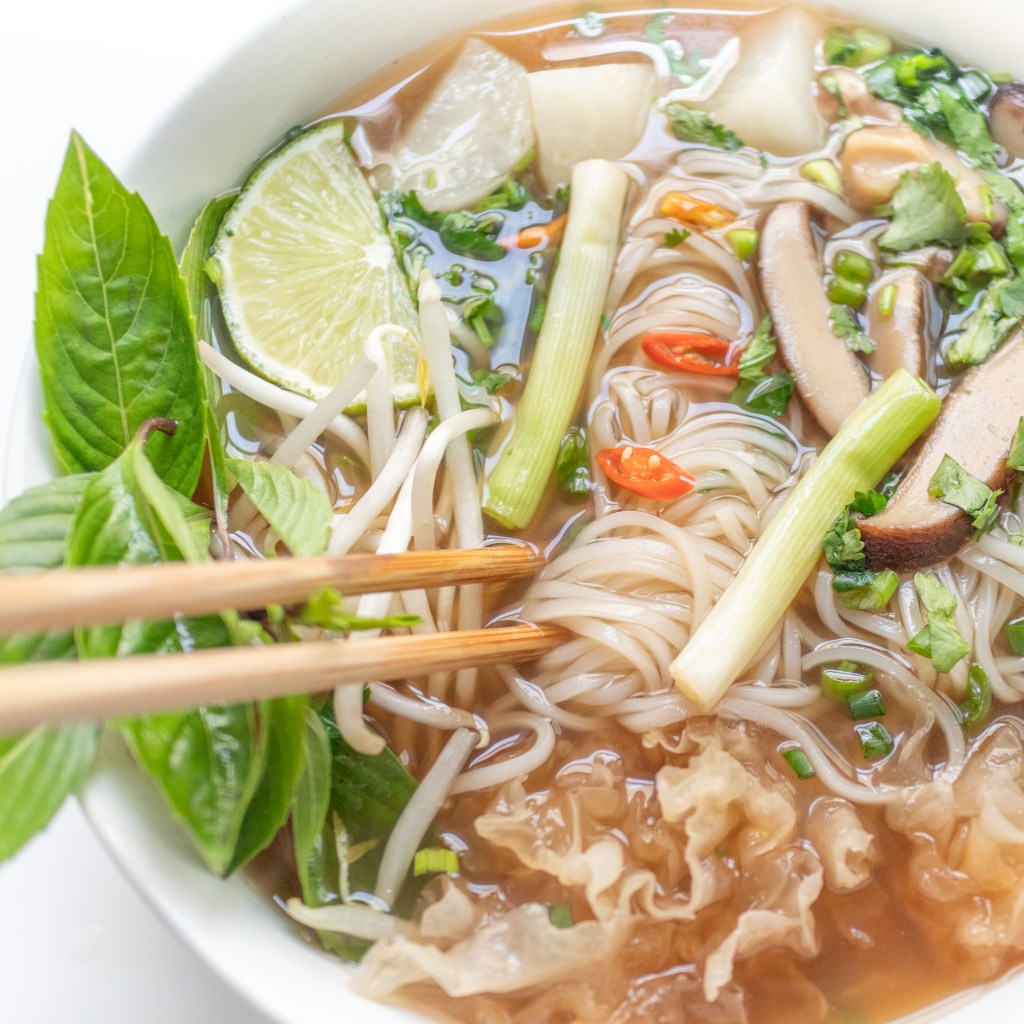
Not vegetarian? No worries. This vegetable-based pho serves as an excellent base—simply add your favorite meat toppings at the end.
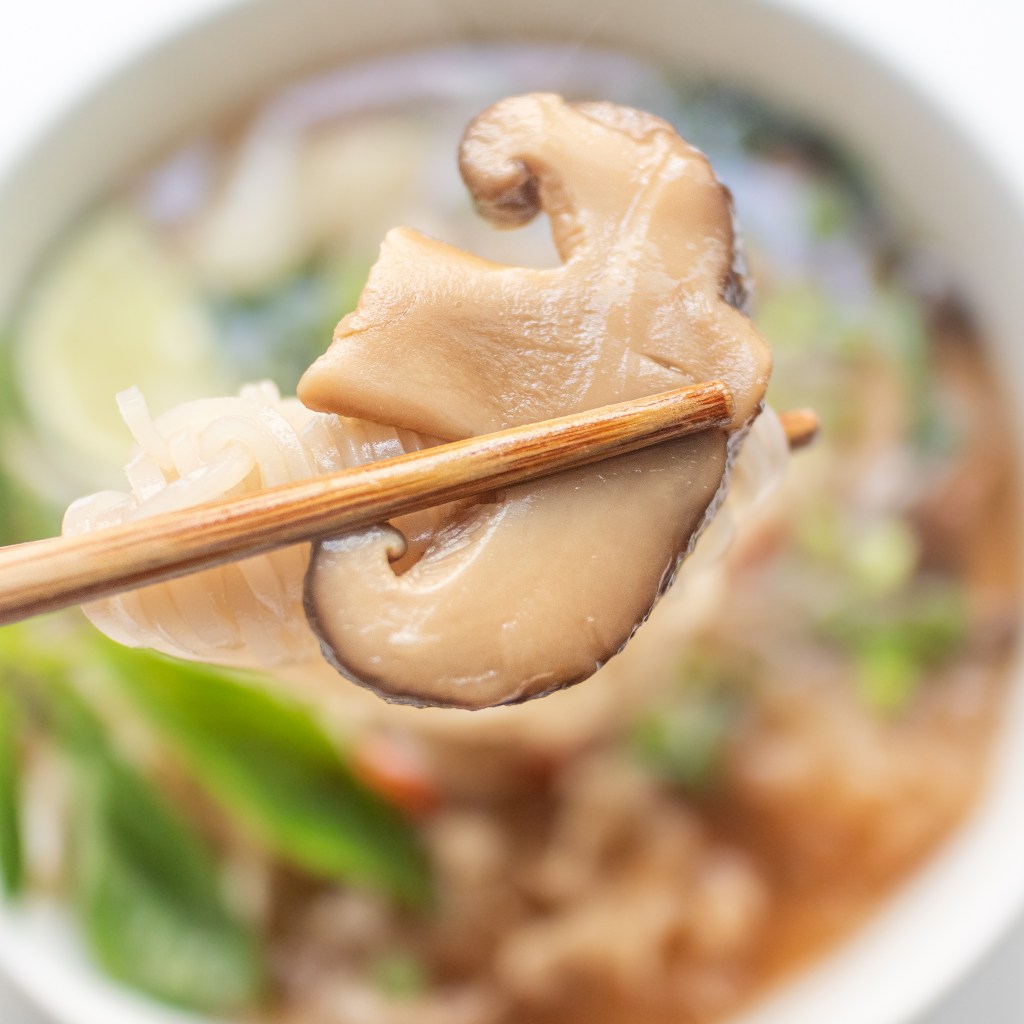
What is An Chay?
As people age, many choose to adopt a vegetarian or vegan lifestyle, known as ăn chay in Vietnamese.
This practice is influenced by Buddhism, where abstaining from meat is viewed as an act of compassion. For others, it serves as a means to eat lighter and healthier.
In Vietnam, many observe a vegetarian or vegan diet on specific lunar calendar days, such as the 1st and 15th. Some do it more frequently, while others make it a daily habit.
When visiting Vietnamese temples, you’ll often find a variety of plant-based dishes being prepared and shared, with pho chay being a common offering.
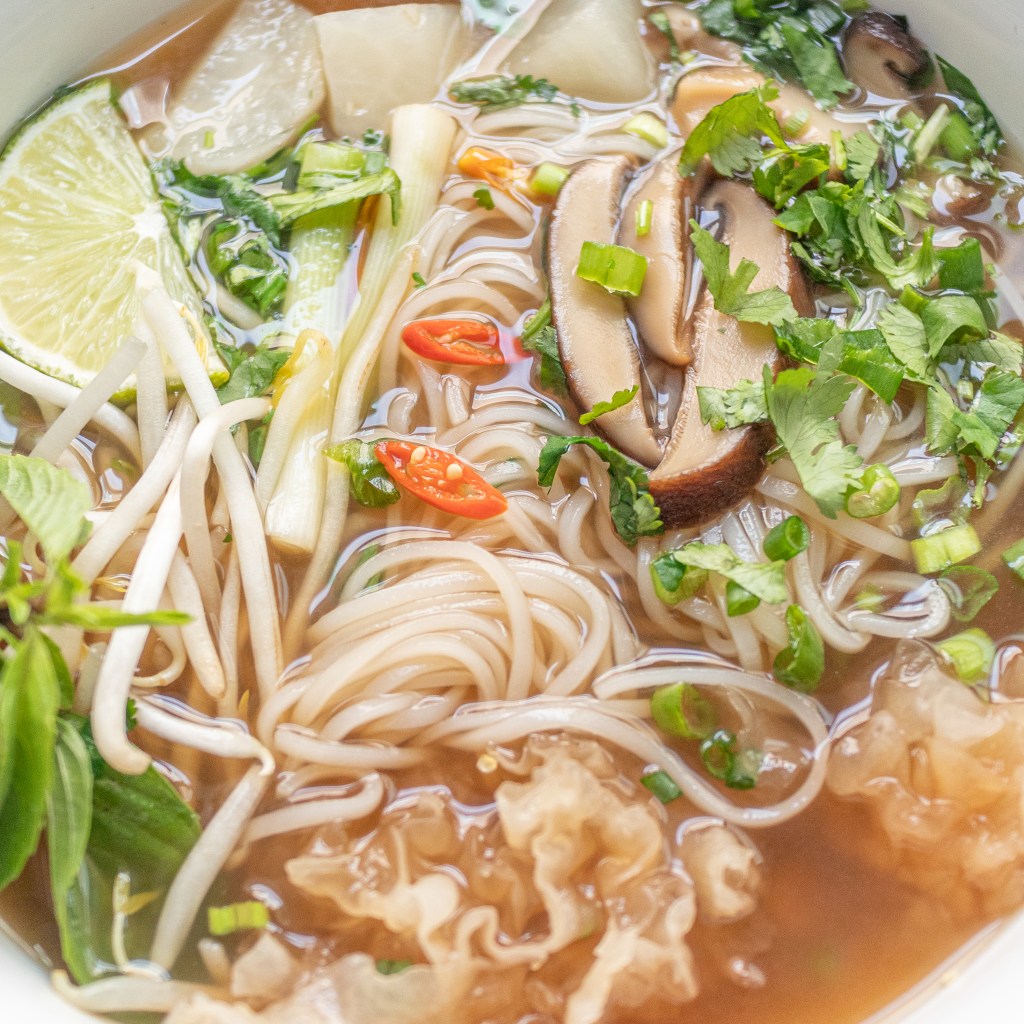
What is Pho Chay?
Phở chay is the meatless variant of Vietnam’s renowned noodle soup. Instead of beef (Phở Bò) or chicken (Phở Gà), the broth is crafted entirely from vegetables and fruits.
There are numerous ways to create a rich vegetable stock, and this recipe highlights some of my favorite ingredients for a light yet well-balanced broth.
Served with rice noodles and fresh herbs, this dish is simple to prepare and requires significantly less time than traditional pho.
However, if you enjoy meat, this phở chay recipe still serves as a fantastic base. Personally, I prefer adding beef meatballs and thin slices of round steak to my bowl. By ladling hot broth over the rare steak, it cooks quickly, allowing me to enjoy a delicious yet heartier bowl of pho.
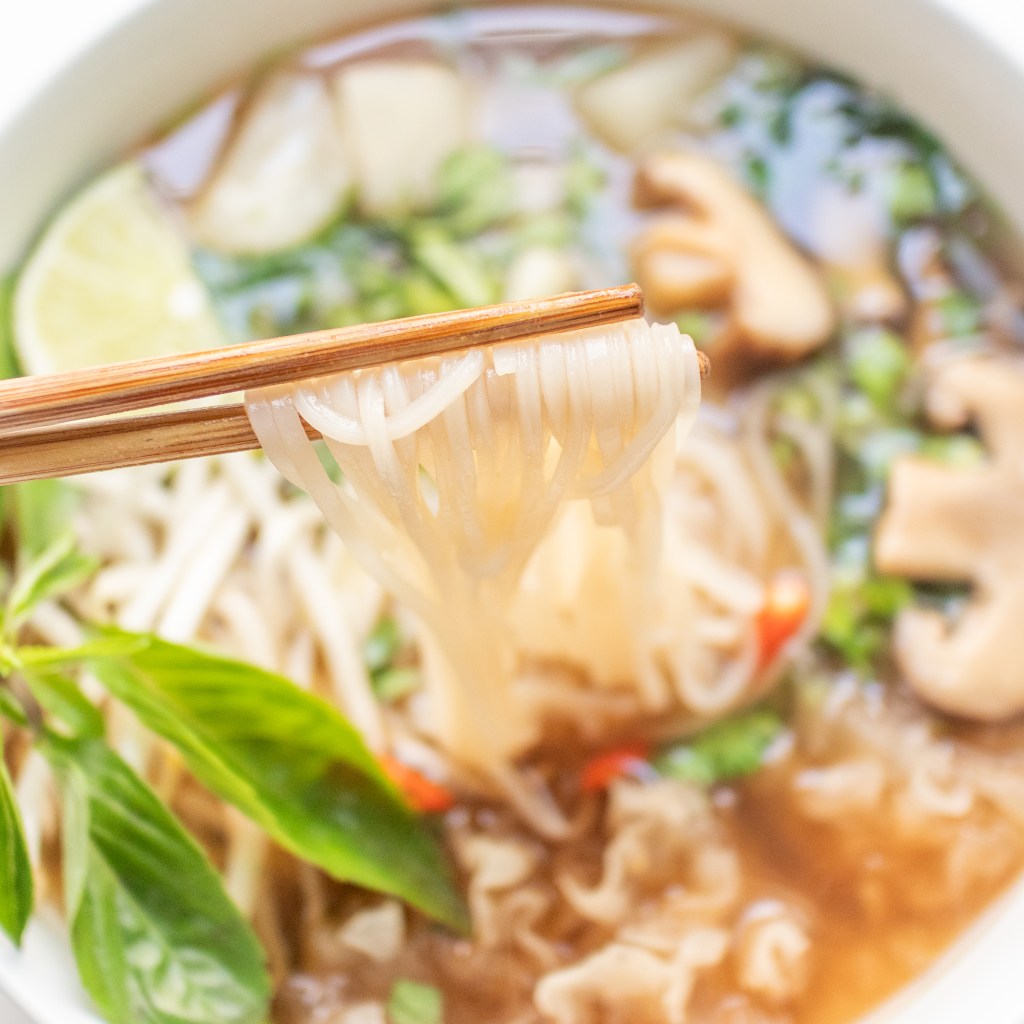
What You Will Need
To prepare pho chay, gather the following ingredients:
- Daikon radish and Napa cabbage: These vegetables form the base of the stock. Alternatives include regular cabbage, leeks, and kohlrabi. While some recipes incorporate Western vegetables like carrots and celery, I find them too fragrant, detracting from the traditional aroma of pho. Feel free to add them if you prefer.
- Red dates (jujubes): These lend natural sweetness to the stock, eliminating the need for additional sugar. Dried jujubes can be found in many Asian supermarkets. If unavailable, fresh apples or jicama can substitute for their subtle sweetness.
- Dried mushrooms: I use dried shiitake and snow fungus, which impart an earthy flavor to the stock. Fresh king oyster mushrooms are another great option.
- Yellow onion and ginger: Essential aromatics for pho. If yellow onions are unavailable, large shallots can be used. Ginger is a must-have.
- Pho spices: These include star anise, cinnamon, fennel, cloves, coriander seeds, and cardamom, which provide the broth with its signature aroma. Pre-ground pho spice packets, resembling tea bags, can be a quick and easy substitute.
- Mushroom seasoning powder, salt, and optional MSG: These seasonings enhance the flavor of the vegetable stock.
- Flat rice noodles: Essential for pho. I prefer using semi-fresh rice noodles typically found in the refrigerated section of Vietnamese supermarkets.
- Fried tofu (optional): For added protein in the finished bowl. You can make your own by slicing firm tofu, seasoning it, and pan-frying until golden brown and crispy. Alternatively, ready-made fried tofu is available at Vietnamese delis or grocery stores.
- Thai basil, cilantro, and green onions: Fresh herbs for garnishing.
- Bean sprouts, lime, sliced chili, hoisin sauce, and sriracha: Classic pho toppings and condiments to customize your bowl at the table.
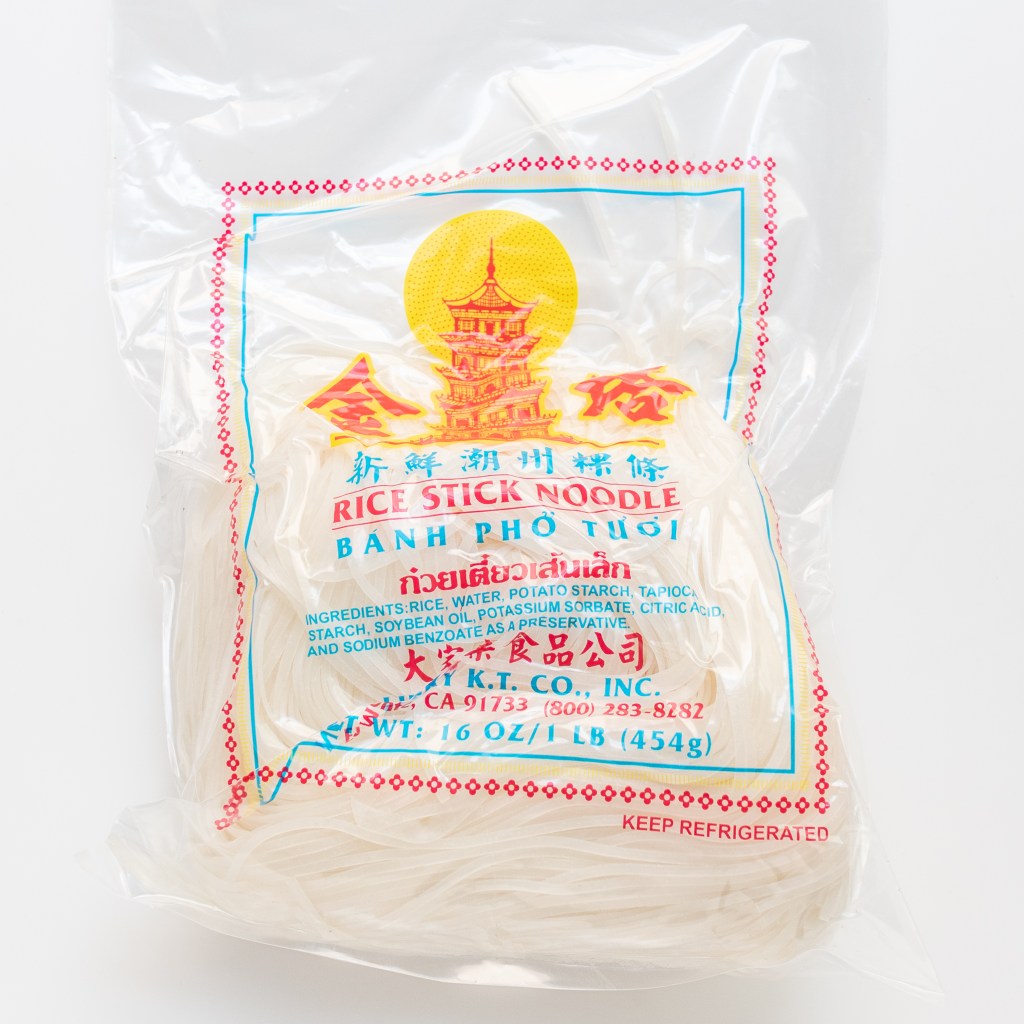
How to Make It
Step 1: Char the Aromatics
Peel the yellow onions and cut them in half. There’s no need to peel the ginger; simply slice it into thick pieces and gently smash each slice with the flat end of your knife.
Traditionally, charring the aromatics is done over an open flame, but modern conveniences can make this process less messy. Place the onion and ginger in an air fryer or toaster oven, roasting at 400°F for 10 minutes or until lightly charred. Alternatively, you can broil them in the oven.
Step 2: Prepare the Stock
In a large pot, combine the daikon, Napa cabbage, rehydrated red dates, shiitake mushrooms, snow fungus, and the charred onion and ginger.

Add water and bring the pot to a low simmer, cooking on medium-low heat for about an hour.
Add the pho spice tea bag during the last 15 minutes of cooking. Strain the stock completely, removing the solids with a fine mesh skimmer or pouring it through a fine mesh strainer into a clean pot.
If desired, reserve the snow fungus, daikon, and shiitake mushrooms as toppings instead of discarding them.

Step 3: Make the Broth
Season the stock with mushroom seasoning powder, salt, and MSG if desired. Add seasonings gradually until it meets your taste preference.
If using green onions, add the stem ends to the broth to infuse their flavor. Your broth is now ready.
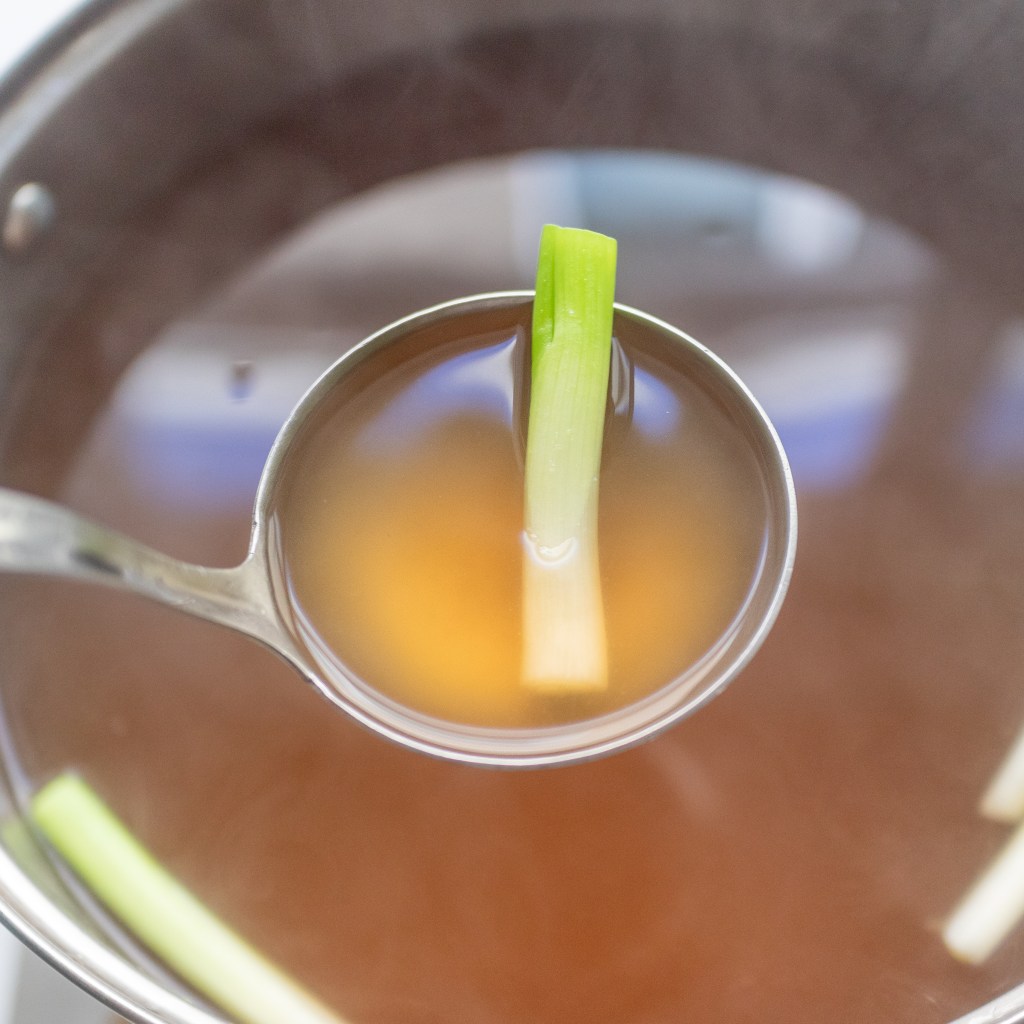
Step 4: Prepare the Noodles
Cook the rice noodles according to package instructions. I typically use fresh fried noodles, blanching them in boiling water for about 30 seconds.
Drain the noodles in a colander and rinse with water to remove excess starch. Shake off any remaining water and divide the noodles into four bowls.
Step 5: Assemble the Bowls
Add your favorite toppings, such as cooked daikon, shiitakes, and a piece of snow fungus. Pour the hot broth over the noodles.
Garnish with fresh herbs like thinly sliced green onions and roughly chopped cilantro. Add a handful of bean sprouts, basil leaves, and a squeeze of lime. Serve with hoisin sauce and sriracha on the side, and enjoy!
